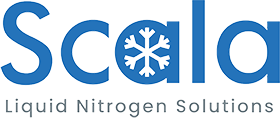Factors You Need to Consider Before Buying a Liquid Nitrogen Generator
In addition to price and technical data, customers should also focus on the following factors that are closely related to installation, operation, and after-sales maintenance when selecting a liquid nitrogen generator, ensuring it meets the needs of the laboratory scenario.

1. Footprint (Dimensions)
• Some manufacturers design their liquid nitrogen generators with components separatedly assemble (which may not include a built-in air compressor and may require an external liquid nitrogen tank or chiller). Adequate spacing must be reserved for the installation of each component. It is essential to request the equipment layout diagram and installation/maintenance space parameters from the manufacturer.
• For oversized liquid nitrogen generator with exceptional length or height, it is necessary to confirm in advance the dimensions of laboratory doorways and passages to ensure the generator can be smoothly transported into the installation area.
2. Noise
• For laboratories that are unoccupied during non-office hours, the noise level can be tolerably relaxed to 65 decibels, as closing the door minimizes its impact on external areas.
• Taking 60 decibels as the reference, every 3-decibel increase in noise level will significantly heighten the sense of irritation in humans.
• Equipment with noise levels exceeding 68 decibels is more suitable for installation in workshops or larger, isolated spaces.
3. Voltage and Power
• Small-scale liquid nitrogen generators typically operate on 220V single-phase power, while some generators require 380V three-phase power with a potential power consumption of up to 7.5 kW. It is essential to verify whether the laboratory's power supply meets these specifications during selection.
• If the total power consumption of the liquid nitrogen generator exceeds 15–20 kW, which generally classified as industrial-grade, it is necessary to verify laboratory's electrical load capacity for compatibility.
4. Ventilation
• Liquid nitrogen generators with significant heat emission must be installed in air-conditioned rooms or well-ventilated areas to keep an ambient temperature between 5°C and 30°C.
• In laboratories with limited space / no independent temperature control, the heat emission of air-cooled units should be carefully evaluated to prevent overheating. If necessary, auxiliary exhaust fans or water-cooled models are strongly remmended.
• During operation, the liquid nitrogen generator releases a small amount of waste oxygen, and the evaporation of liquid nitrogen may reduce oxygen concentration. Therefore, the laboratory must quipe basic ventilation capacity and must not be sealed.
5. Waste Discharge
• It is necessary to confirm whether the equipment discharges unliquefied waste nitrogen during liquid nitrogen production.
• If an oil-injected screw air compressor is in the component list, the condensate it produces must not be discharged directly, and a separate treatment plan must be devised.
6. CE or ASME Certificate
• Even if you are not in the United States, requiring that the core pressure vessel of the equipment possesses ASME U Stamp certification means you are obtaining the highest globally recognized level of design and manufacturing quality assurance. This is the most critical safety credential.
• If your laboratory is located in Europe, or if the equipment may potentially be shipped to Europe in the future, the CE Mark (indicating compliance with the PED Directive) is legally mandatory and must be obtained.
7. Warranty and Maintenance
• Clarify the liquid nitrogen generator's maintenance interval and corresponding maintenance costs.
• Confirm the format of maintenance services, including whether on-site assistance is required and the relevant terms for such services.
• Determine whether user-performed maintenance is supported and if the manufacturer provides a maintenance guide.
• Verify the warranty period for the entire machine and its core components, as well as the repair and replacement policies covered under warranty.


